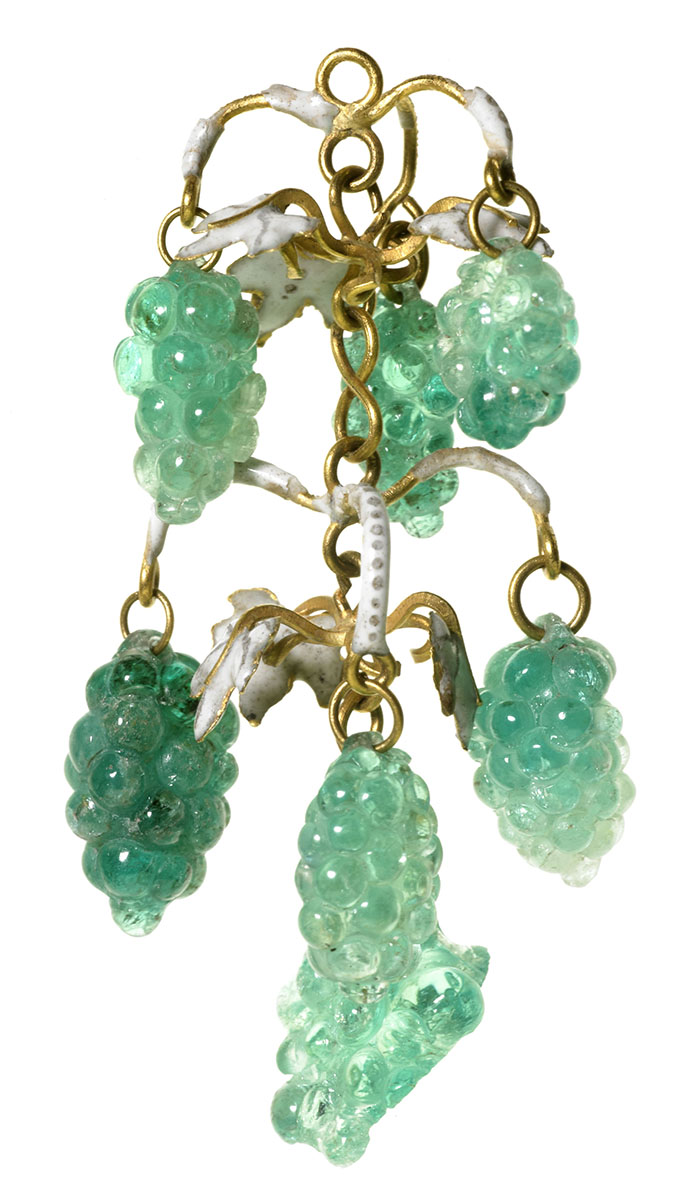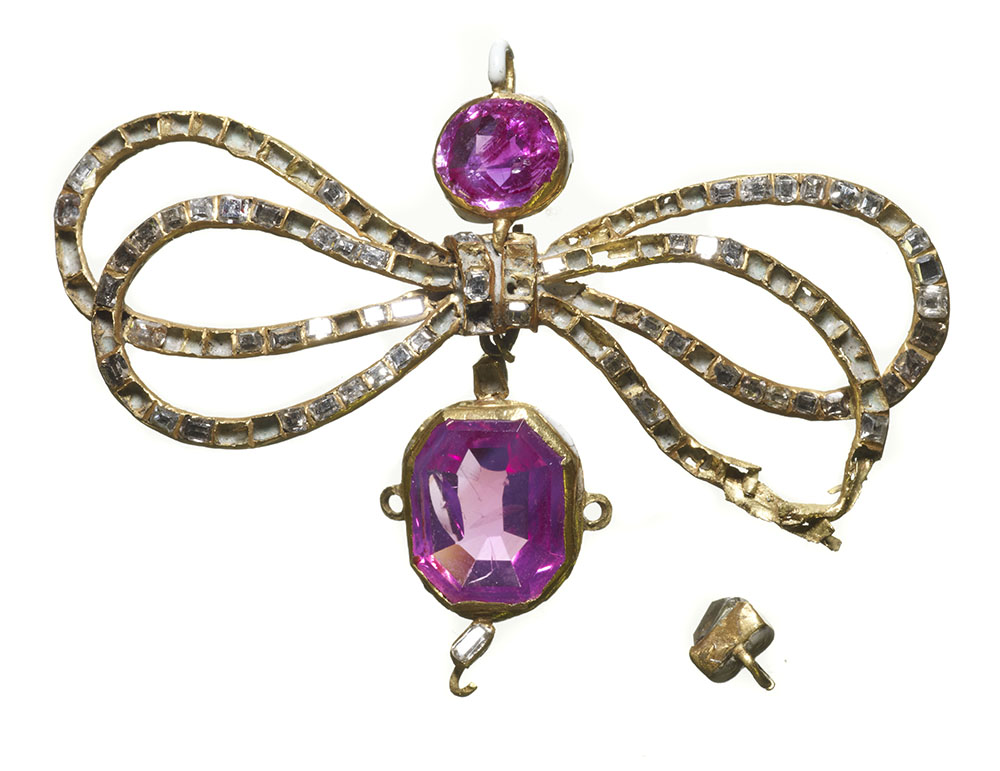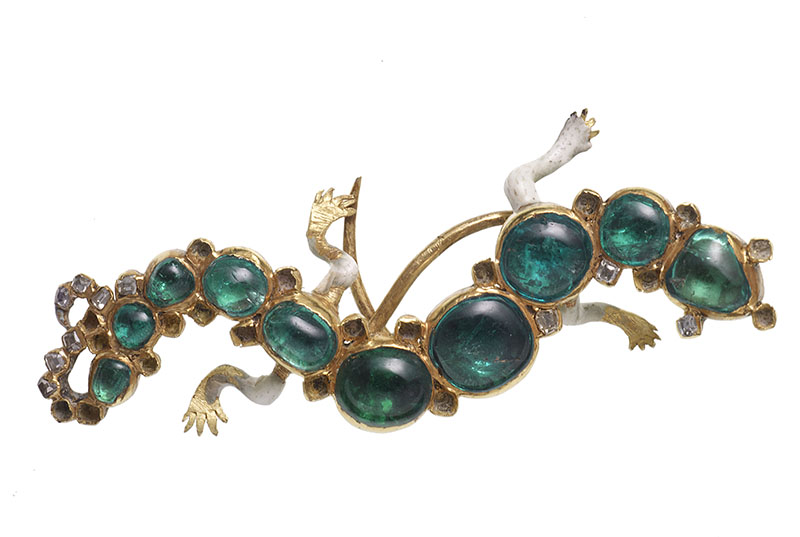After almost 100 years of their chance discovery, the Cheapside Hoard, a cache of beautiful gems and jewels dating back to 17th and 18th century England, go on exhibit at the Museum of London, backed by contemporary art jeweller brand Fabergé and Gemfields.
Emerald Watch
In 1912, a couple of workmen, excavating a cellar using a pickaxe near Cheapside in London, discovered a treasure they had never imagined they would stumble upon. The treasure of 400 pieces of beautiful priceless jewels, including a range of Elizabethan and Jacobean rings, brooches and chains besides a host of scent bottles and fan holders, studded with vibrant coloured gemstones, were sent into the Museum of London collection.
Grape Pendant
The Cheapside Hoard, as it came to be known, is now being put on exhibition at the Museum from 11 October 2013 until 27 April 2014. Sponsored by Gemfields and Faberge, two of the biggest names in luxury and jewels, The Cheapside Hoard: Lost Jewels of London will explore the various mysteries surrounding the jewels, which are thought to be the work of a single goldsmith jeweller.
Emerald Carved Parrott
Among the bejewelled pieces that will add sparkle to the 500-piece exhibition is an exquisite cabochon emerald and yellow gold salamander brooch, a one-of-a-kind watch mounted in a single large emerald with a translucent green enamel dial, as well as superlative examples of enamel and gem-set Elizabethan necklace chains decorated with floral motifs. The exhibition has been masterfully curated by the museum’s senior curator of Medieval & Post-Medieval history (and world-expert on the Cheapside Hoard) Hazel Forsyth, and marks the first time that the Hoard will be displayed in its entirety since its chance discovery more than 100 years ago.
Ruby and Diamond Bow Pendant
Significantly, even a hundred years later, the jewellery collection is considered important not just because of the beauty of the pieces but also because they are an important source of information on how Elizabethan and Jacobean jewellery in England evolved. Besides, they offer unparalleled insight into a jewellers’ craft in the 16th and 17th century as well as the role London played in the international gem trade during an age of global conquest and exploration.
Salamander Brooch
For jewellery brands, the seminal exhibition offers an unmatched opportunity to be associated with an event as high profile as this. According to Katharina Flohr, Fabergé’s Creative and Managing Director, “The artistry of colour is a passion at Fabergé, and the Cheapside Hoard contains a highly unusual collection of carved, cabochon and faceted precious and semi-precious jewels, demonstrating the astonishing ingenuity of craftspeople in the 16th and 17th centuries.” Gemfields CEO Ian Harebottle adds, “As the leading authority on coloured gemstones, it is our pleasure to be able to support the Museum of London in showcasing the most important collection of jewellery and gemstones found on English soil.”







